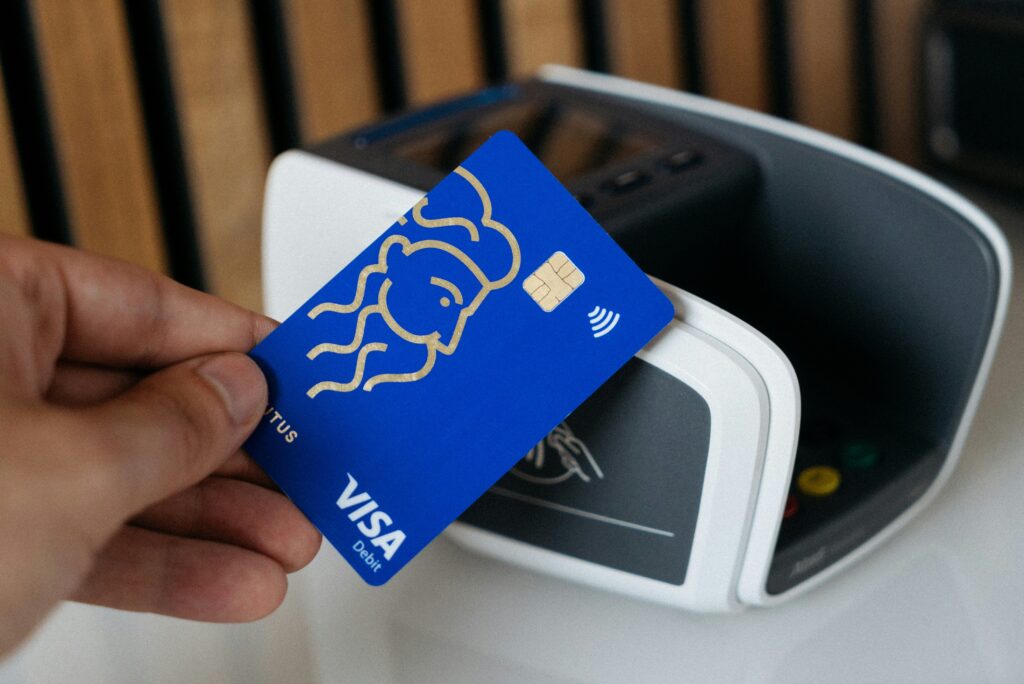evealed | Speeding Up the Process, Reducing Steps: Has the 2020 HR Interview Routine Changed?
The hiring process has always been a delicate balancing act between efficiency and fairness. For decades, companies relied on lengthy, multi-step interviews to ensure that every candidate was scrutinized before an offer was extended. The philosophy was simple: more steps meant more certainty. But in 2020, something unprecedented happened. The arrival of the global pandemic, combined with remote work, new HR technologies, and economic uncertainty, reshaped how employers and job seekers interacted. Suddenly, speed mattered more than tradition. Companies began to ask themselves: was the classic interview routine outdated? Did it need to be replaced by something faster, leaner, and more efficient?
Before 2020, the traditional interview process was predictable. Candidates submitted résumés, often through online portals that felt like black holes. If they passed the initial screening, they received a phone call from a recruiter. Then came one or two technical rounds, followed by multiple in-person meetings with managers, team members, and sometimes even executives. For high-stakes industries like consulting or investment banking, the process could stretch over weeks, with case studies, group assessments, and final partner interviews. For many candidates, this routine was exhausting. Some waited months for decisions, while others were “ghosted” after several rounds of interviews. Employers, too, felt the pain: long processes led to talent drop-off, inflated costs, and slower time-to-hire metrics.
By early 2020, even before the pandemic, HR leaders had begun to experiment with ways to streamline recruitment. But when COVID-19 hit, everything accelerated. Offices closed, travel was restricted, and face-to-face interviews became impossible. Suddenly, companies that had clung to old-fashioned hiring had no choice but to pivot to virtual models. HR departments faced pressure to reduce steps, speed up decision-making, and maintain fairness in a digital environment. The result was a hiring revolution.
Virtual interviews became the new normal. Tools like Zoom, Microsoft Teams, and Google Meet were quickly adopted as interview platforms. Meanwhile, specialized HR tech solutions such as HireVue allowed employers to collect one-way video responses from candidates. This reduced scheduling conflicts and gave hiring managers the flexibility to review responses on their own time. In industries where speed was critical, such as tech and healthcare, interview steps were cut dramatically. Some companies collapsed five rounds into two. Others replaced traditional panel interviews with structured behavioral questions asked over video. For the first time, efficiency became a higher priority than ceremony.
From the candidate perspective, the shift was both liberating and stressful. On one hand, the shorter process meant faster feedback and fewer endless rounds of testing patience. Candidates no longer had to take entire days off work to attend multiple interviews. For international applicants, the removal of travel requirements opened new opportunities. On the other hand, compressed timelines left less room for relationship-building. Many candidates felt that rushed interviews did not allow them to show their full personalities or demonstrate cultural fit. Worse, some feared that AI-based pre-screening tools would filter them out before a human ever saw their application.
Employers faced their own challenges. The drive to speed up the process often meant taking risks. In 2020, many firms reported higher rates of “wrong hires,” employees who looked good on paper and performed well in virtual interviews but struggled in practice. With in-person cues and informal office interactions removed, assessing soft skills became more difficult. Some companies compensated by introducing psychometric testing or gamified assessments. Others leaned on structured interviews, where every candidate received the same set of standardized questions, ensuring comparability.
Technology became both the savior and the disruptor. Artificial intelligence tools were used to scan résumés, flag keywords, and even analyze video responses. Gamified assessments like Pymetrics or coding platforms like HackerRank became substitutes for technical interviews. Scheduling software reduced administrative overhead, automatically matching candidate availability with recruiter calendars. These innovations reduced friction and cut time-to-hire significantly. A process that once dragged on for six to eight weeks could now be completed in two or three.
But the new speed raised a question: was quality being sacrificed? Many HR leaders argued that reducing steps did not necessarily mean lowering standards. By focusing on skills-based assessments and behavioral interviews, companies claimed they could identify strong candidates more efficiently. Instead of requiring candidates to jump through redundant hoops, streamlined processes emphasized what really mattered. However, skeptics worried that cutting steps would limit diversity efforts. In traditional hiring, multiple interviewers across different levels could provide checks and balances against bias. In faster models, fewer decision-makers sometimes meant more bias creeping into final selections.
Globally, the changes in HR interview routines were not uniform. In the United States, where competition for tech and finance talent was fierce, speed was embraced enthusiastically. Companies like Amazon and Google experimented with shorter hiring loops, while startups slashed processes to secure candidates quickly before rivals could snatch them. In Europe, where labor laws and cultural norms emphasize fairness, companies were more cautious, ensuring that even streamlined processes maintained thorough evaluation. In Asia, particularly in China and India, the pandemic forced rapid adoption of digital interviews, but traditions like campus hiring and written tests persisted. International students faced unique challenges: many could no longer attend career fairs or in-person sessions, forcing them to rely entirely on digital platforms to showcase their skills.
The candidate experience became a central HR concern. With virtual interviews, companies realized that impressions mattered more than ever. A clumsy online interview could damage employer branding. Firms invested in training managers to conduct professional, empathetic virtual conversations. Some introduced “virtual office tours” to replicate the sense of company culture. Others implemented faster feedback loops, sending updates within days instead of weeks, to keep candidates engaged in the process.
Looking ahead, the question remains: will interview routines remain streamlined, or will companies revert to pre-2020 traditions? The answer seems to be somewhere in between. As of 2021 and beyond, many organizations adopted hybrid models. Initial screenings and technical assessments remain virtual, but final interviews are often conducted in person, once travel and safety conditions allow. This balance offers efficiency without entirely losing the human touch. At the same time, skills-based hiring is gaining traction, with employers relying less on résumés and more on demonstrable competencies.
The future may see even more radical changes. With advances in predictive analytics, machine learning, and AI, interviews could become increasingly data-driven. Algorithms may predict candidate success with growing accuracy, further reducing the need for multiple human interviews. Yet the human element will always matter. Soft skills, cultural fit, and emotional intelligence cannot be fully measured by machines. The best HR practices will likely combine the precision of technology with the intuition of human judgment.
In conclusion, the HR interview routine did change in 2020, and the changes were significant. The pandemic forced companies to adopt virtual tools, streamline steps, and prioritize speed. While the shift brought efficiency and accessibility, it also raised concerns about fairness, quality, and candidate engagement. The challenge for HR moving forward is clear: how to maintain the gains in speed without sacrificing depth, inclusivity, or long-term hiring success.
Revealed | Speeding Up the Process, Reducing Steps: Has the 2020 HR Interview Routine Changed?
The way companies hire has never been static. Recruitment has always evolved in response to shifts in the economy, workplace culture, and technological progress. Yet, few moments in history forced such a rapid transformation as the year 2020. The COVID-19 pandemic not only disrupted businesses and economies, but it also reshaped the foundations of hiring itself. At the center of this transformation lay a pressing question: should HR interviews be as lengthy, traditional, and multi-layered as they once were—or should speed, simplicity, and efficiency define the new normal?
This article takes a deep dive into how the HR interview routine changed in 2020. It will explore the traditional process, the drivers of change, the impact of the pandemic, technological disruptions, and the future of interviews. Along the way, it will assess what these changes mean for employers, job seekers, and the broader labor market.
The Pre-2020 HR Interview Routine: A Long and Winding Road
Before 2020, interviews followed a ritualistic pattern. Candidates knew what to expect, even if the exact steps varied by industry. A standard process included:
- Application & Résumé Screening – Candidates submitted résumés and cover letters, which were reviewed manually or filtered through Applicant Tracking Systems (ATS).
- Phone Screen with a Recruiter – An initial conversation, usually 15–30 minutes, to verify basic qualifications.
- Technical/Skill-Based Rounds – Candidates were tested on role-specific skills. For engineers, coding tests. For consultants, case studies. For sales, role-plays.
- Behavioral/Panel Interviews – Meetings with multiple stakeholders to evaluate cultural fit, communication skills, and potential.
- Executive/Final Round – A high-stakes discussion with senior leadership, often the final gatekeeper.
This process could stretch for six to eight weeks, sometimes longer. In industries like investment banking or consulting, it might take three months before an offer was extended. Candidates often went through five to seven interviews before receiving a decision.
Employers justified the lengthy process with two main arguments:
- It ensured quality control, reducing the risk of bad hires.
- It allowed multiple people to weigh in, minimizing bias and improving alignment.
But the disadvantages were obvious:
- Time-to-hire was slow, meaning top candidates often accepted other offers.
- The process was costly, requiring significant HR resources.
- Candidate experience suffered, as applicants grew frustrated by delays and repetitive questions.
Even before 2020, dissatisfaction with the old system was growing.
The Shock of 2020: Why Everything Changed
When COVID-19 spread across the globe, it disrupted every aspect of work. Offices closed, recruitment events were canceled, and face-to-face interviews became impossible. But companies still needed to hire. Essential industries like healthcare, logistics, and tech were actually ramping up recruitment.
Suddenly, organizations faced a paradox: they needed to hire faster than ever, but the old in-person, multi-step process was no longer viable. This forced three urgent shifts:
- Remote-First Recruitment – Every interview had to move online. Video platforms became the default.
- Fewer Steps – Companies collapsed multiple rounds into fewer touchpoints to avoid candidate fatigue and logistical bottlenecks.
- Technology Adoption – Automated screening, AI-driven tools, and gamified assessments became mainstream.
In effect, the pandemic accelerated trends that were already underway, condensing what might have been a 10-year evolution into less than a year.
Virtual Interviews: The New Normal
By April 2020, virtual interviews replaced in-person meetings globally. Recruiters who once insisted on office visits found themselves scheduling back-to-back Zoom calls.
The benefits were immediate:
- Speed – No travel or scheduling constraints meant faster processes.
- Cost savings – Employers saved on logistics, while candidates avoided travel costs.
- Wider access – International candidates could compete without needing visas just to attend interviews.
Yet, new problems emerged:
- Technical glitches disrupted conversations.
- Reduced personal connection made it harder to build rapport.
- Camera fatigue drained both candidates and interviewers.
Companies experimented with new formats. Some replaced phone screens with one-way video interviews, where candidates recorded answers to preset questions. Others introduced online assessment centers, using breakout rooms to simulate group activities.
Virtual hiring wasn’t perfect, but it was faster—and in 2020, speed became the overriding priority.
Cutting Steps: From Five Rounds to Two
Another hallmark of 2020 was the reduction in interview steps. Instead of dragging candidates through endless hoops, many firms streamlined to two or three key stages.
For example:
- Tech companies often collapsed five interviews into two: one technical assessment and one cultural/behavioral round.
- Startups cut directly to a skills test followed by a conversation with the founder.
- Healthcare organizations introduced “fast-track” hiring, sometimes making offers after a single interview.
Employers realized that too many rounds were redundant. Did every candidate really need to meet five different managers? Did repeating the same behavioral questions add value? The urgency of 2020 forced companies to be ruthless about what was essential and what was tradition.
The Rise of HR Technology
Technology was the backbone of this transformation. Several tools surged in popularity:
- Applicant Tracking Systems (ATS) became more intelligent, using AI to rank candidates.
- Video interview platforms like HireVue analyzed tone of voice, facial expressions, and word choice (sparking ethical debates).
- Gamified assessments tested cognitive ability through engaging tasks, replacing old multiple-choice exams.
- Skill-based platforms such as HackerRank, Codility, and Pymetrics provided objective data.
- Automated scheduling tools eliminated endless email exchanges.
The result? A process that once took 8–12 weeks could now be completed in 2–3 weeks, sometimes less.
Candidate Experience: Faster but More Impersonal
From the candidate perspective, 2020 was a mixed bag.
Positives:
- Faster decisions reduced anxiety.
- Remote interviews eliminated costly travel.
- Equal access for those living outside major cities.
Negatives:
- The process often felt rushed and transactional.
- Lack of informal interactions (like office tours) made it hard to judge company culture.
- Automated tools raised fears of being unfairly filtered out by algorithms.
Candidates long accustomed to “proving themselves” in multiple stages suddenly had to impress within a compressed window. For some, this was liberating. For others, it was stressful—like having to win a marathon in a sprint.
Employer Risks: Bad Hires and Bias
While speed improved efficiency, it also introduced risks. Employers reported:
- Higher bad-hire rates: Candidates who performed well virtually sometimes struggled in real work environments.
- Difficulty judging soft skills: Empathy, collaboration, and leadership were harder to gauge without in-person dynamics.
- Bias creep: With fewer interviewers involved, there were fewer checks and balances against unconscious bias.
Some companies countered these risks with structured interviews, standardized assessments, and post-hire probation periods.
Regional Perspectives
The changes weren’t uniform worldwide.
- United States: Tech giants led the shift toward speed, competing aggressively for talent.
- Europe: More cautious adoption, balancing efficiency with fairness, especially under strict labor laws.
- Asia: Rapid digital adoption, but traditional campus hiring events still influenced recruitment in countries like China and India.
- International Students: Faced challenges with online-only systems but gained opportunities to compete remotely for roles abroad.
The Future of HR Interviews: Hybrid and Skills-Based
As the dust settled, a new hybrid model began to emerge:
- Virtual for early stages – screenings, assessments, and first-rounds conducted online.
- In-person for finals – key decision-makers still prefer meeting face-to-face when possible.
- Skills-based focus – hiring less on résumés, more on demonstrable abilities.
- Tech-human balance – AI handles efficiency, while humans evaluate fit and empathy.
Future interviews may integrate predictive analytics, but the human element will remain irreplaceable. Cultural alignment, creativity, and emotional intelligence cannot be fully captured by algorithms.
Conclusion: A Turning Point in Hiring History
The HR interview routine did change in 2020—and likely forever. The pandemic forced companies to embrace speed, reduce steps, and adopt technology at an unprecedented rate. The result was a hiring process that became more efficient but also more impersonal.
The lesson of 2020 is clear: efficiency matters, but not at the expense of fairness, quality, and humanity. The companies that thrive will be those that master the balance—leveraging technology to streamline hiring while ensuring that candidates still feel seen, heard, and respected.
The traditional multi-month hiring marathon is unlikely to return in its old form. Instead, the future will belong to organizations that move quickly, hire wisely, and never forget that behind every résumé is a human being.




